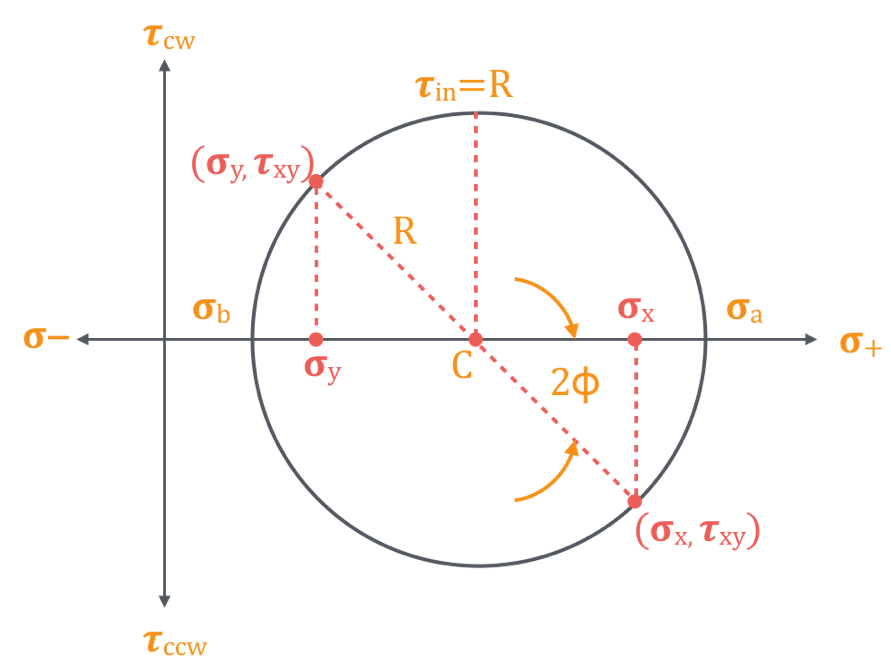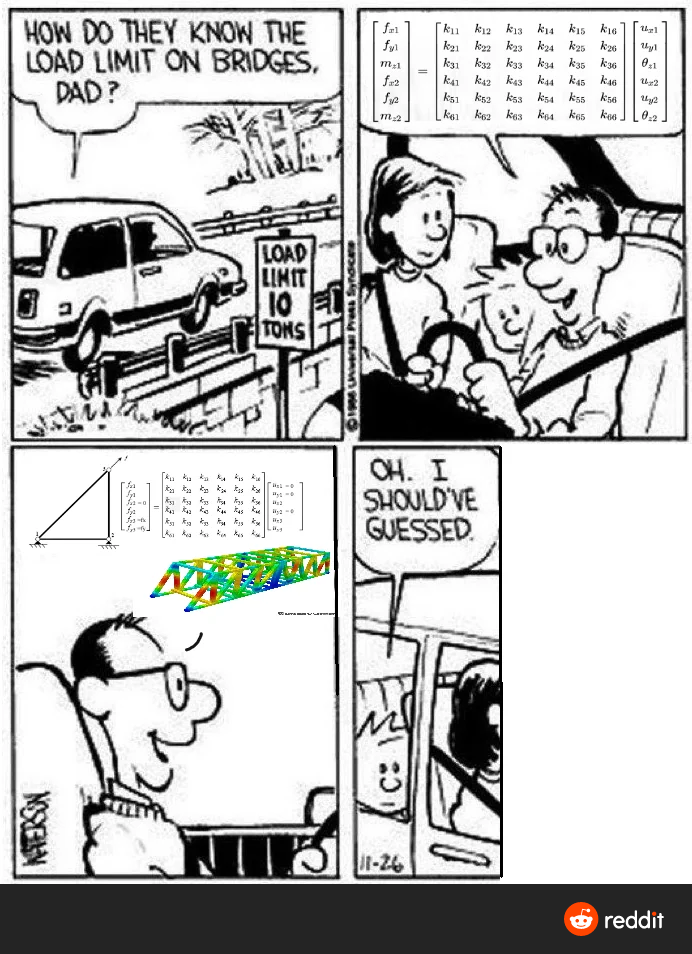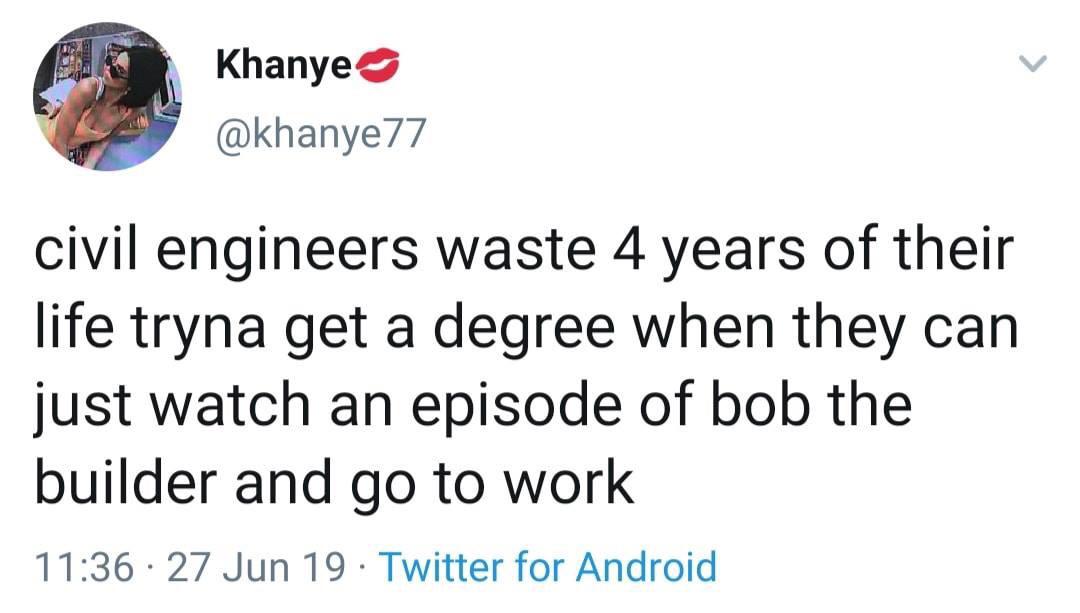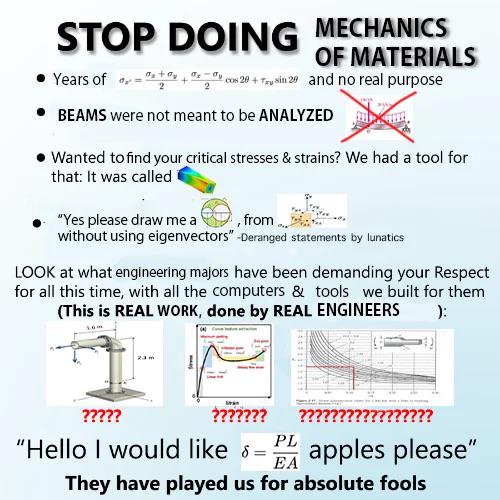Ever asked an engineer a simple question? Prepare for a math explosion! 💥 Calvin innocently asks how bridge load limits are determined, and instead of a normal parent answer like "they test it" or "smart people figure it out," Dad goes FULL ENGINEER MODE with stiffness matrices, finite element analysis, and structural mechanics equations that would make a physics textbook blush. This is exactly why engineers don't get invited to parties! They turn "pass the salt" into a dissertation on sodium chloride crystal structures and ionic bonding. The "Oh, I should've guessed" reaction is every non-engineer's response to these mathematical avalanches. Next time you meet a civil engineer, just nod and smile. Trust me, it's easier than understanding why that bridge won't collapse under 10 tons of weight!


 Academia
Academia
 Ai
Ai
 Astronomy
Astronomy
 Biology
Biology
 Chemistry
Chemistry
 Climate
Climate
 Conspiracy
Conspiracy
 Earth-science
Earth-science
 Engineering
Engineering
 Evolution
Evolution
 Geology
Geology





